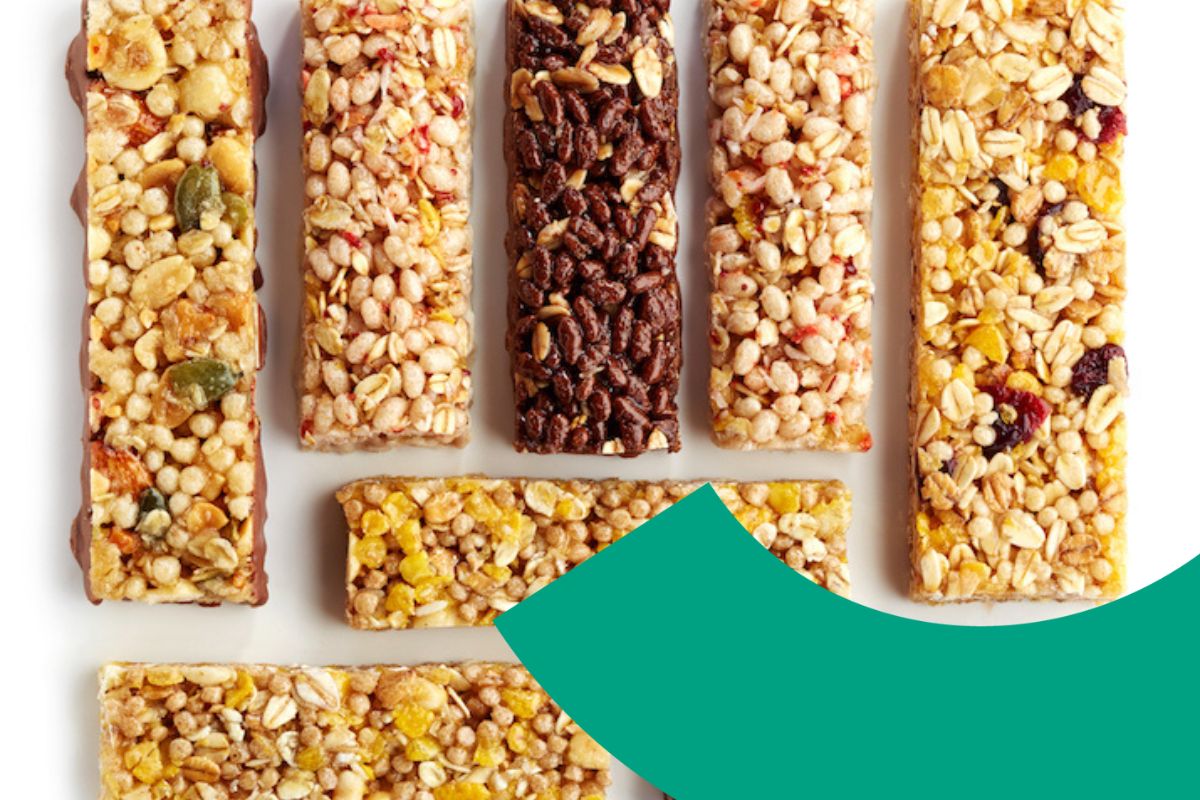Whether you refer to them as protein bars, energy bars, snack/meal bars or food bars, all of these supplements food share one important factor… convenience. Not necessarily just convenience as a snack to satisfy a person’s basic nutritional needs, but also with regards to convenience for meal timing to support any health or fitness goal. Nutrition bars serve a wide variety of uses for different populations:
- Pre- or Post-workout Nutrition for athletes or active individuals
- Mid-meal snack to quickly curb any hunger or low blood sugar
- Increase daily protein or calorie consumption
- Meal replacement
With a large portion of our society focused on weight management, these power packed food bars have been shown to possibly have a benefit to support these weight loss programs. Several studies have suggested that protein-rich snacking may boost satiety and actually help to facilitate weight loss. In a longitudinal study, researchers gave 17 men and women with type 2 diabetes moderately high-protein morning and afternoon snacks (7 g to 12 g of protein) for four weeks, and compared the results with their normal eating habits for four weeks. The subjects who ate the two high-protein snacks lost a modest but significant amount of weight (1 kg) during the four-week period. Researchers noted that the subjects’ weight reduction occurred without changes in total energy intake.
The correlation in the research between protein bars & weight management may be related to controlling hunger or satiety. Many effective weight loss regimens include strategies to control hunger or satiety, as this is a critical factor with reducing or controlling energy intake. Several studies have suggested that protein-rich snacking may boost satiety and facilitate weight loss. In a longitudinal study, researchers gave 17 men and women with type 2 diabetes moderately high-protein morning and afternoon snacks (7 g to 12 g of protein) for four weeks, and compared the results with their normal eating habits for four weeks. The subjects who ate the two high-protein snacks lost a modest but significant amount of weight (1 kg) during the four-week period. Researchers noted that the subjects’ weight reduction occurred without changes in total energy intake.
The protein bar industry has come a long way in the last 50 years since the first energy bar entered the American marketplace. In the late 1960’s the popularity of the space program was taking off, and Pillsbury Company created Space Food Sticks to capitalize on the space program. The pioneers of the protein bar probably did not foresee how big of a market it would become. The explosion of the supplement industry in the last several decades has included a similar rise in protein or energy bar manufacturing and sales. According to market research and projections the protein bar (food bar) industry has seen a dramatic rise in sales in the last 5 years, with almost a 50% increase since 2011. The projections for 2016 for sales top $8.2M, and is expected to continue to grow over the next decade.
So you may be asking yourself, “With so many bars on the market how do I choose which one is right for me?”.
Whether used independently or as part of a structured nutrition coaching program, these bars offer practical solutions for managing dietary requirements.
🔗 Start your nutrition journey with The Foolproof Guide
to Adding Nutrition Coaching to Your Services
There are some important tips that health industry professionals advise for picking out the best bar for your goals & lifestyle. These include:
- Quality of Ingredients – the first thing you should look at is the ingredient list. What type of protein are they using? Sugar & type of sweetener/sugar, fat content (sat fat)?
- Purpose & Application to Goals – will these bars help you meet your goal, such as weight loss/gain, fuel or energy, health…etc)? Will the bar replace or supplement a meal (regular meal or Pre-/Post-workout)?
- Brand Reputation – Does the brand have a good reputation? Reading reviews of protein bars can help you pick out good brands, if you don’t know many off the top of your head.
- Value for Money – how expensive are the bars? Protein bars should run you $1-$3 each, depending on the quality and brand. Compare ingredients & claims with different priced bars to make sure you don’t sacrifice quality for cost.
- Taste/flavor – does the flavor sound tasty to you? Obviously you’ll want to choose a good flavor so you actually want to eat the bars. As opposed to buying all of the flavors of a bar to try, make sure to take advantage of consumer reviews & ratings. This can be a great starting point to pick out the tastiest flavors
With taking these important tips in mind, here is a list of some of the top selling & rated protein bars currently on the market (not in any particular order). Included with each listing is some basic nutrition info & facts that can help.
*NET Carbs = Total Carbs – Fiber – Sugar Alcohols
Quest Bars
The Breakdown
Protein bar lines include more than 15 flavors to choose from
Bars (60g) contain:
- Approx 190 calories
- 21 grams of protein
- 20 g of carbohydrates (3-5g NET Carbs)
- 17g fiber
- 6-7g of fat (2-3g saturated fat)
Macronutrient Sources:
- Protein source is whey isolate, which contains 90%+ of pure protein & amino acids, and has been shown to allow for higher rates of digestion & absorption
- Carbohydrate sources are prebiotic fibers & sugar alcohols
- Fat source is primarily from almonds, cocoa butter & palm oil
Quest bars are promoted as they do not contain artificial fillers such as xylitol, glycerine and malitol
Gluten free
Cost per bar ranges from $2-$2.50
ISS Research Oh Yeah One Bar
The Breakdown
Protein bar lines include 8 different flavors to choose from
Bars (60g) contain:
- 210 calories
- 21-22 g of protein
- 23 g of carbohydrate (2 g NET carbs)
- 7-8 g of fat (5 g saturated fat)
Macronutrient Sources:
- Protein sources are a blend of whey protein isolate & milk protein isolate
- Carbohydrate sources are from sugar alcohols & fiber primarily with additional carbs from cocoa powder & fats/oils
- Fat sources are primarily from sunflower seed butter & palm kernel oil
Certified Gluten Free
Cost per bar ranges from $2-$2.30
Pure Protein
The Breakdown
Protein bar lines include 25 different flavors to choose from
Bars (50 g) contain:
- 200 calories
- 21-22 g of protein
- 17-20 g of carbohydrate (8 g NET carbs)
- 4-5 g of fat (2-3 g saturated fat)
Macronutrient Sources:
- Protein content is a blend of whey protein concentrate, whey protein isolate & milk protein isolate
- Carbohydrate content is from sugar, milk powders, sugar alcohols & fiber primarily with additional carbs from cocoa powder & fats/oils
- Fat content is primarily from nuts, nut oils, palm kernel oil, & almond butter
Several gluten free options available
Cost per bar ranges from $1.75-$2
Power Crunch
The Breakdown
Protein bars (wafer) lines include 7 different flavors with their original product
Bars/Wafers (40g) contain:
- 200 calories
- 13-15g of protein
- 10-12g carbohydrates (4g NET carbs)
- 12-13g Fat (6g saturated fat)
Nutrition Sources
- Protein source is a whey protein blend from hydrolyzed whey protein, whey protein isolate, milk protein isolate)
- Carbohydrates derived from enriched wheat flour, malted barley flour, sugar and cocoa processed with alkali fructose
- Fat source is primarily from palm oil
Gluten free options & flavors available
Cost per bar ranges from $1.30-$2
Clif Bar Builder’s
The Breakdown
Protein bar with 5 basic flavors and 2 additional flavors with the Protein max bar
Bars (68g) contain:
- 280 calories
- 20 g protein mostly from Soy Isolate
- 29-30g carbohydrates (approx. 20g NET Carbs)
- 10g Fat (5g saturated fat)
Nutrition Sources:
- Protein source is primarily from Organic Soy Concentrate
- Carbohydrate primarily from organic sources (Ingredients #2-5 Beet Juice, Organic Brown Rice Syrup & Organic Dried Cane Syrup) and advertised as low glycemic
- Fat sources from palm kernel oil & nuts
No gluten free options available
Cost per bar ranges from $1.75-$2.50
Take your Fitness & Nutrition Coaching Business to
the next level. Start your free trial of Trainerize.
References
- Navas-Carretero S, Abete I, Zulet MA, Martinez JA. Chronologically scheduled snacking with high-protein products within the habitual diet in type-2 diabetes patients leads to a fat mass loss: a longitudinal study. Nutr J. 2011;10:74.
- Ortinau LC, Hoertel HA, Douglas SM, Leidy HJ. Effects of high-protein vs. high-fat snacks on appetite control, satiety, and eating initiation in healthy women. Nutr J. 2014;13:97.
- https://www.marketresearch.com/corporate/aboutus/press.asp?view=3&article=2752&g=1
- International Society of Sports Nutrition position stand: Protein and Exercise. Journal of the International Society of Sports Nutrition 2007, 4:8 http://www.jissn.com/content/4/1/8


